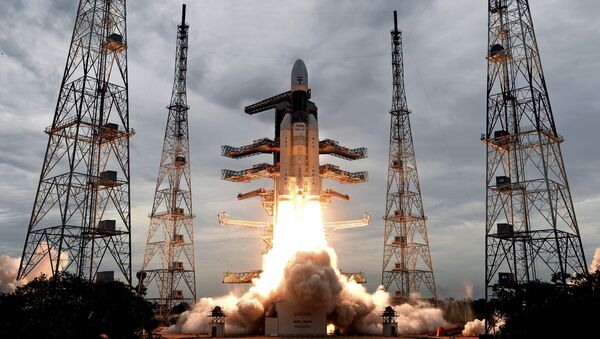The Rover has now started collecting data on the lunar surface and atmosphere. The Imaging Infrared Spectrometer (IIRS) onboard the lunar probe is designed to measure the reflected sunlight and emitted portion of Moonlight from the lunar surface in narrow and contiguous spectral channels (bands) ranging from ~800-5000 nanometre (0.8-5.0 micrometres).
The primary objective of IIRS is to understand the origin and evolution of the Moon in a geologic context by mapping lunar surface minerals and volatile composition using signatures in the reflected solar spectrum.
“IIRS has now sent its first illuminated image of the lunar surface. The image covers part of the far side of the Moon in the northern hemisphere. Few prominent craters are seen in the image (Sommerfield, Stebbins and Kirkwood),” said ISRO in a statement on Thursday.
#ISRO
— ISRO (@isro) October 17, 2019
See the first illuminated image of the lunar surface acquired by #Chandrayaan2’s IIRS payload. IIRS is designed to measure reflected sunlight from the lunar surface in narrow and contiguous spectral channels.
For details visit:https://t.co/C3STg4H79S pic.twitter.com/95N2MpebY4
Earlier, the ISRO shared high-resolution sharpest-ever images of the Moon, taken by its high-resolution camera (OHRC) onboard the Orbiter.
The images are an important new tool for lunar topographic studies of select regions, said the ISRO. It was obtained from a 100-kilometre altitude and covered a part of Boguslawsky E Crater and its surroundings, which lies in the southern polar area of Moon. The Crater was named after the German Astronomer Palon H. Ludwig von Boguslawsky.
The Orbiter’s life was initially planned to last one year, but during its journey to the Moon, the ISRO was able to save fuel, which made it possible to extend its life for a longer period. It is capable of communicating with the Indian Deep Space Network (IDSN) at Byalalu, near India’s southern city of Bengaluru.
Chandrayaan-2, with all its domestically-made payloads, began its voyage on 22 July from ISRO’s spaceport on the eastern seacoast of Sriharikota in Andhra Pradesh. After an initial hiccup, it crossed all hurdles seamlessly.


